I’ve been trying unsuccessfully to write my bio for this newsletter. I’m struggling to find a way to succinctly describe who I am and what I think I’m doing here. There seems to be a sweet spot in tone, somewhere between straightforward and playful, earnest and irreverent, that I simply cannot strike. I considered having Cleo write it for me —a playful dodge that might have produced the most amusing and/or accurate description of my identity and purpose —but that felt like an evasion.
And so I’ve been forced to really dig in and investigate why a few simple sentences are proving so hard to generate. I’ve never been comfortable with self-definition and self-promotion. Perhaps that’s a byproduct of a Gen X sensibility— valuing non-conformity, non-belonging and a rejection of simple categorization in the form of skeptical detachment. Or maybe it’s because if I write it I have to believe it; staking a claim that I then have to prove: I am a writer. I am an artist. I belong here and I’m not just fucking around.
This feeling is amplified by the process of trying to decide whether I eventually return to my job of the past 17 years, teaching visual arts in a public high school, or take a flying leap into the professional unknown. Stepping away from teaching means shedding that identity as well as the side hustle of writing opinion pieces about public schools and education.
I’m currently residing in a sort of identity no-man’s-land, a liminal space that’s simultaneously liberating and unsettling. I am used to finding the edges of my persona through interactions with the people in my daily sphere who know me, and through the purpose of my labors. This includes the labor that provides an income, but also the work of building community and tending to the land around our home. Aside from Andy and Cleo, none of that exists for me here. Sometimes as I’m wandering through the city I experience the sensation of total invisibility. Here I can be anyone or anything, but mostly I am just a middle-aged woman hovering around the margins, observing.
I started this newsletter as a way to hold myself accountable to writing and documenting the experiences of this year. But really, there’s a basement layer of honesty, that I’m slowly inching my way towards writing that’s more personal and revealing, and I’m a little afraid to do it publicly. Because this newsletter, while ostensibly about travel, really could be about so much more. And so I’ll keep tiptoeing towards those truths, and maybe someday I’ll eventually be able to write that bio. Or, maybe not.
Cleo’s class is going on a field trip to Bologna to visit FICO, Italy’s Food Theme Park. I truly can’t imagine anything more Italian than a theme park devoted to food. One of the exhibits advertised on the website involves a closer look into the production of mortadella. I anticipate this peek into the mysteries of this decidedly dodgy and unapologetically delicious meat might be her final push into stringent vegetarianism (she is almost already there). I’m a bit ashamed to admit that mortadella and stracciatella on focaccia, and mortadella on pizza with ricotta and pistachios are some of my favorite meals I’ve eaten here. I’m bracing myself to know way too much about how it’s made to ever be able to eat it again, and that’s probably for the best.
With all things mortadella still on my mind, I stumbled upon an unintentionally funny article in the NY Times about the vaunted “Mediterranean Diet.” Every few years an article like this appears, extolling the health benefits of this gold standard diet rich in whole grains, olive oil, fruits, vegetables, lean meats and fish. Following this diet, it promises, will deliver the culinary wayward to the elusive Shangri-la of health and happiness.
The portion of the article that stood out as particularly ridiculous were the quotes by a Dr. Sean Heffron, a cardiologist at NYU. He ‘helpfully’ provides examples of foods that comprise the traditional Mediterranean meal plan, stating, “Breakfast might be smashed avocado on whole-grain toast with a side of fresh fruit and a low-fat Greek yogurt. For lunch or dinner, a vegetable and grain dish cooked with olive oil and seasoned with herbs — roasted root vegetables, leafy greens, a side of hummus and small portions of pasta or whole grain bread, with a lean protein like grilled fish.”
I would love for Dr. Heffron to take me on a tour of all the places that I might find these supposedly heart-healthy meals. Maybe they are being eaten by Italians in their homes??? If I found avocado toast for breakfast at a cafe that doesn’t cater solely to tourists, I would be utterly and completely shocked. In fact, I’d be more than shocked, I’d be beside myself with happiness, as I am thoroughly underwhelmed by the supremacy of the cornetto/brioche for breakfast. Moreover, when we want to consume vegetables that haven’t been drowned in oil and cooked to oblivion, we make them at home. *I do actually enjoy the way they abuse their vegetables— especially the greens.
In the spirit of gross generalizations and no data collection, I’d say that Italians do an incredible job of eating seasonally and locally, and the freshness of the food is truly something to celebrate —except when they stop serving pasta Genovese (pesto) because basil is out of season and that’s the only pasta your picky kid wants to eat.
However, from my casual observations, they also eat a ton of refined grains (pizza, pasta, panini), sugar, cured meats and cheeses. Oh, and many of them also drink and smoke immoderately. The major players here are carbs, meat, dairy, fat…and poison! And you know what, on the surface of things, they seem pretty healthy and happy. (Again, I’m not claiming this is science.)
After reading the piece, I clicked on the readers’ comments, bracing myself for the usual onslaught of body-shaming, pro dieting, regressive commentary I’ve come to expect from just about any article in the Times about bodies and health. But, to my surprise, I was mostly pleasantly mistaken. Many of the comments are written by people who live, or who have lived in this geographic region, pointing out both the idealized fantasy of this diet, as well as what factors might actually contribute to better health outcomes for people around the Mediterranean.
Some of these include: access to free universal health care, walkability, strong community and social affiliations, paid maternity leave, longer paid vacations, access to affordable childcare, shorter workdays, and more stringent regulation of food additives. In short: a better quality of life made possible by a more robust social safety net.
This topic is one that Andy and I bat around daily, as the difference is marked, and it obviously has to do with the structural and systemic, not the personal. Articles like this one shift the responsibility of health solely onto individual choices, completely ignoring larger issues that play a much bigger part in our health and ultimate well being.
At the risk of sounding like my 20-year-old self on her junior year abroad, it feels impossible to not fixate on the palpable differences between everyday life here and our life in Portland. I do not live in fear of random acts of violence or guns, I do not regularly encounter people experiencing homelessness, and I do not worry about health care, except when I think about returning to the US without a job— and then I worry a lot.
I am not putting Italy on a pedestal, as the country is beset with issues wide-ranging and serious. The wealth disparity between the North and the South is marked and intractable, the population is aging faster than it is growing, and there is a sizable population of people experiencing homelessness — an estimated 50,000 people, many of whom are migrants— and that is certainly nothing to celebrate. Still, from the perspective of someone looking for the most obvious and visible rents in the social fabric, there are fewer gaping holes here. (I guess we’ll have to wait and see if/how social spending is undermined while Meloni’s Fratelli d’Italia party is in power.)
The right to free universal health care stands out as the obvious difference that has cascading effects on the greater social welfare. Italy’s healthcare system is consistently rated one of the best in the world. And yet, spending on healthcare in Italy was 9.5% of GDP in 2021, while in the US, it was 18.3% of GDP. Their healthcare system is working, and it’s costing people a whole hell of a lot less.
So much of my trepidation about a career change centers around healthcare. For almost 20 years I’ve been enmeshed in the public employee system, providing consistent and dependable income as well as access to affordable health care for our family. Now that I’ve exited that system, it feels treacherous to embark on any path that does not place those concerns at the center of my decision making. And that depresses the hell out of me.
Sometimes I imagine how things would be different if the cost of healthcare was not a part of the calculus of my life. I imagine the relief. Then I envision the resulting re-organization of my priorities. I think of the decisions I could make, and the risks I might take based on the surety of that basic need being met. Then I hold in my heart all of the people who have been crushed by the cost of becoming ill in America, the course of their lives irreparably altered by the cruelty baked into our system. I just cannot understand why the broken ideology of privatized, for-profit medicine as a kind of “freedom” persists in the US. It truly baffles me.
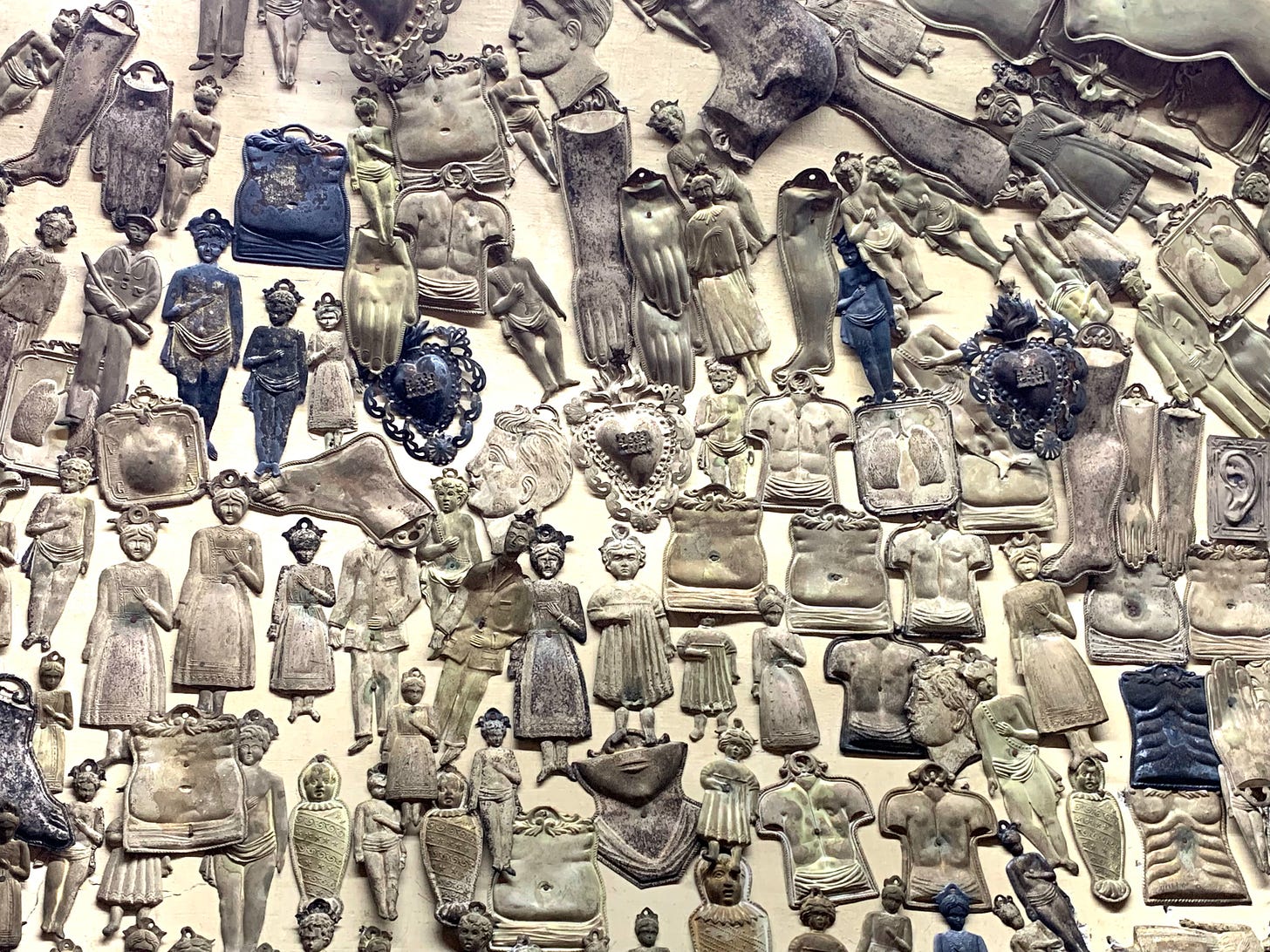
I just finished Elena Ferrante’s Neapolitan quartet. I first attempted to read My Brilliant Friend in 2012 when it came out in the States, but I was distracted by caring for baby Cleo and trying to work full time and never made it past the second chapter. For me, those first few years of new motherhood were marked by extreme sleep deprivation and postpartum depression and a resulting inability to focus. (That paid maternity leave would have been really helpful at this time in my life.) Finishing anything was a monumental task. The irony is that so much of these books is about exactly this tension — about women and mothers and the ways that we are deprived the sustenance of art, creation and community while we are tending to the needs of everyone but ourselves.
I am certainly late to the Ferrante party, but I am so glad I showed up. Reading these books now is a sort of revelation. They are not easy reads; they do not provide escapes into plot or dependable narrative rhythms. Instead, they catalogue with sometimes infuriating microscopic attention, the push and pull of relationships over time, including all the anguish, joy, minutiae, monotony, resentments and complicated love they contain. The layers of the novels: the personal, political, revolutionary and mundane, all coalesce into a sort of claustrophobic web that gradually pulls you closer and closer to the characters. I do not like anyone in these stories, but I love them deeply.
These books also further widened an aperture into my understanding of Naples, a city that I find deeply compelling. The Naples of Ferrante’s novels—from the 1940’s to the 1990’s—feels remarkably similar to that of the Naples I first encountered in 1999, and the one we visited in December. It’s a city that announces itself assertively in contrasts: vibrant and run down, beset by corruption and humming with vitality and constant renewal. Walking around, I was taken in by the crumbling architectural gems layered in soot and graffiti set against the striking cerulean arc of the Bay of Naples. The cacophony of the street markets, the accessible and delicious food and the extroversion of the Neapolitans all appealed to me.
Cleo, on the other hand, was rattled by Naples. She was overwhelmed by the high-pitched whine of the ubiquitous scooters, the piles of trash accumulated along the streets, and the chaos of bodies and cars. Eventually, she was able to articulate that Naples reminded her of being back in Portland, and that it exhausted her. She’s become accustomed to the relative predictability, refined beauty and tidiness of Northern Italy. To her, Naples felt like returning to a place of hyper vigilance in the midst of disorder.
Attempting to understand the reasons why Naples is perennially plagued by civic mismanagement, corruption and crime led me to the writer and activist Roberto Saviano. Saviano is famous for writing the book Gomorrah, in which he exposed the inner workings of the Camorrah, the criminal organization responsible for much of the civic instability in Naples and the surrounding communities of Campania.
In his words:
When infrastructure struggles against a constant lack of funds and resources – that is Gomorrah. To be Gomorrah is not just about toting weapons, threats and extortion, drug-dealing, killing, dumping garbage and money laundering…And to not be Gomorrah isn’t simply being outraged and angry. To not be Gomorrah means working to find a cure, to never stop looking for the antidote to this poison…The antidote to Gomorrah means forging a new path, which is not a vacuum, not devastation, not neglect, not rubble.
Last spring Portland Congressman Earl Blumenauer expressed his worries about Portland in an interview with Oregon Public Broadcasting. “It’s not that people aren’t still working to make a better Portland…but collectively I am concerned. Collectively it feels like it’s broken. Collectively it seems like we have challenges unlike any we have ever faced.”
I’ve been thinking a lot about the way Saviano describes Gomorrah as the mindset that enables the behaviors, policies and inaction that undermine our communities. Maybe he is right, that when outrage and anger prevail, there is no hope for effective change. The only way through is a new unexplored path. Certainly no amount of avocado toast is going save us.
And that’s all I’ve got for now. Carnevale commences this weekend and I’m bracing myself for the madness of the crowds about to descend. As my friend Ryan excitedly pointed out, it will be like living in Kubrick’s Eyes Wide Shut for almost an entire month. Fidelio…
xo, Belle
Hot Links!
This newsletter was very serious! So, here’s a recommendation that’s silly and dumb and will also make you laugh: Aubrey Plaza chatting, eating hot wings and snorting milk through her nose on Hot Ones.
Cleo and I started watching the tv show Shrinking. It’s pretty easy breezy despite the premise (dead wife and depression). Highlights: Harrison Ford in a comedic role and Jessica Williams reminding me how she alone made my long commute bearable with her podcast Two Dope Queens (RIP)!
I really like Ruben Ostlund’s films, and Triangle of Sadness, his latest, did not disappoint. I forgot to mention this film when I watched it a couple of months ago, but it’s come up in many different conversations so it’s worth a mention. This article by Evan Osnos in the New Yorker about the Getty family’s wealth and dedication to tax evasion is a perfect pairing with the film and a wild ride on its own. Highly recommend.
Aside from tearing through Ferrante, I also read Asymmetry by Lisa Halliday, Three Junes by Julia Glass, and Vladimir by Julia May Jonas. Of the three, Vladimir, a morally messy story about a 58-year-old literature professor who becomes obsessed with a much younger male professor in her department, is the one that’s stuck with me.
Three Junes I found to be gorgeously written and also strangely unaffecting. Each sentence was crafted with such care, and I know that Julia Glass is very, very smart, but I felt oddly detached from the story. Asymmetry also had that effect on me for different reasons. Halliday is an ultra-talented author with many provocative things to say about authorial intent and narrative form, but the second half of the book was a bit of a slog for me, and I felt a little grumpy about how “clever” the whole thing ended up being.
And, your palate cleanser, the hilarious Matteo Lane.
Ciao!




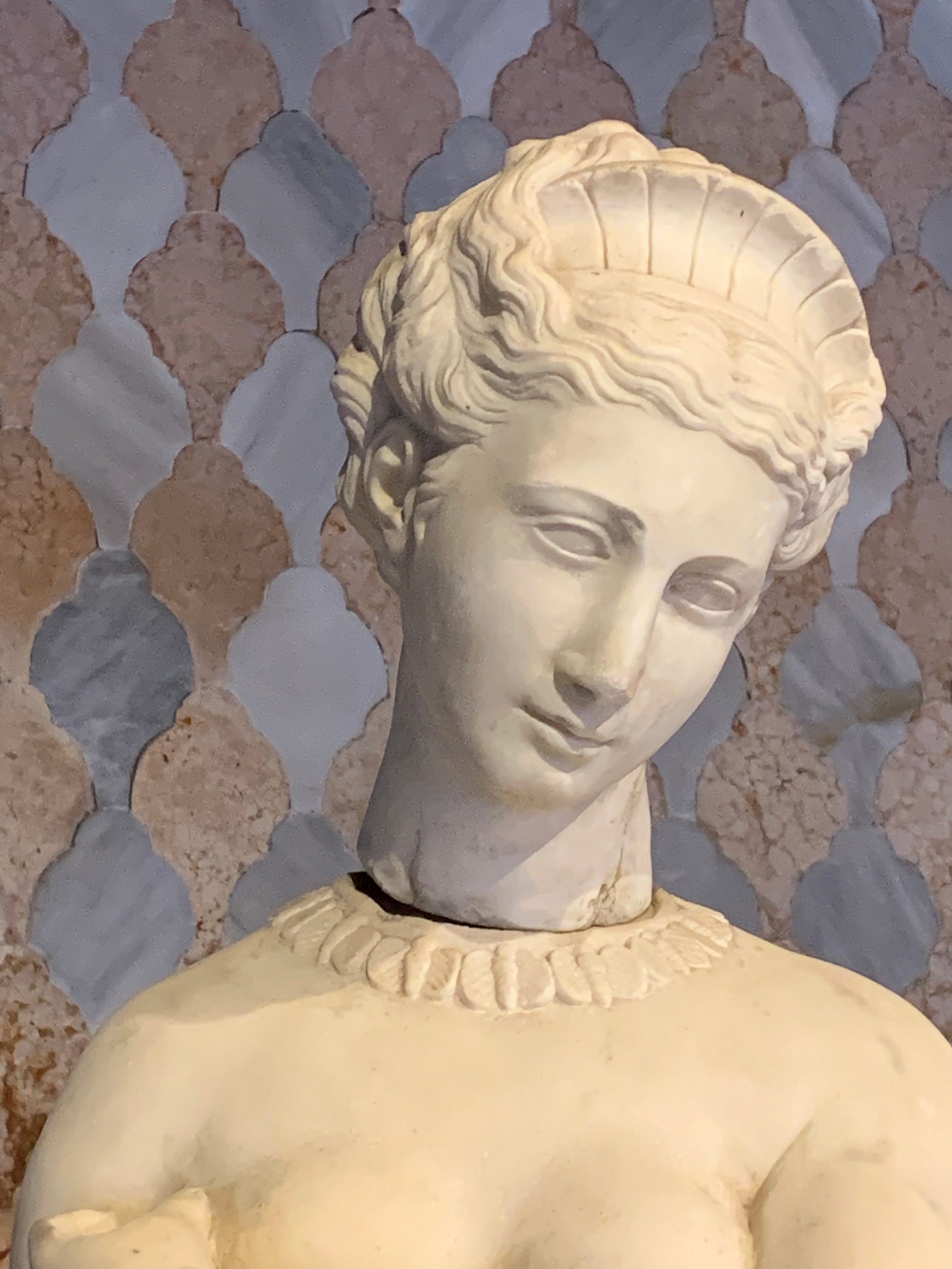
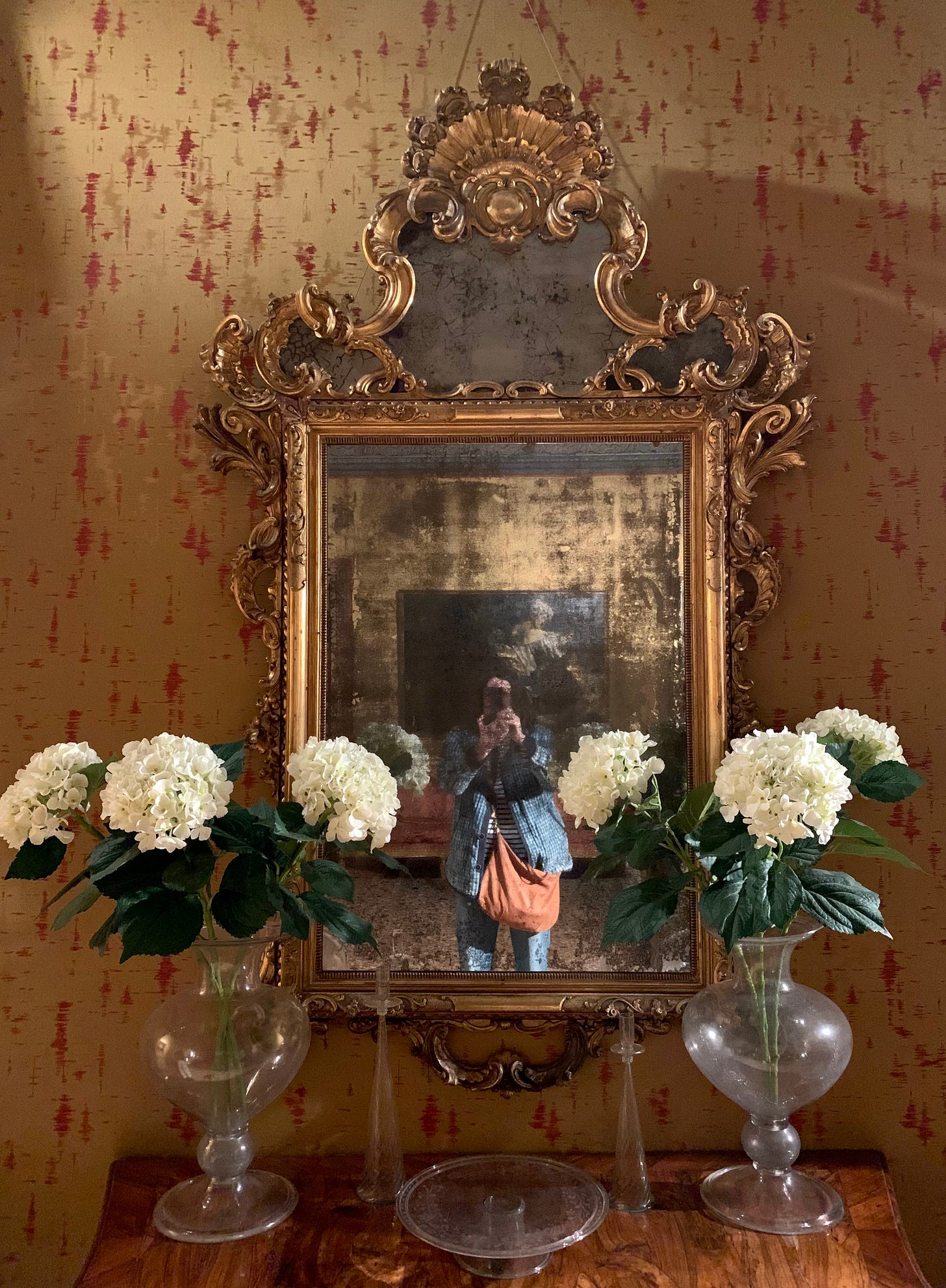

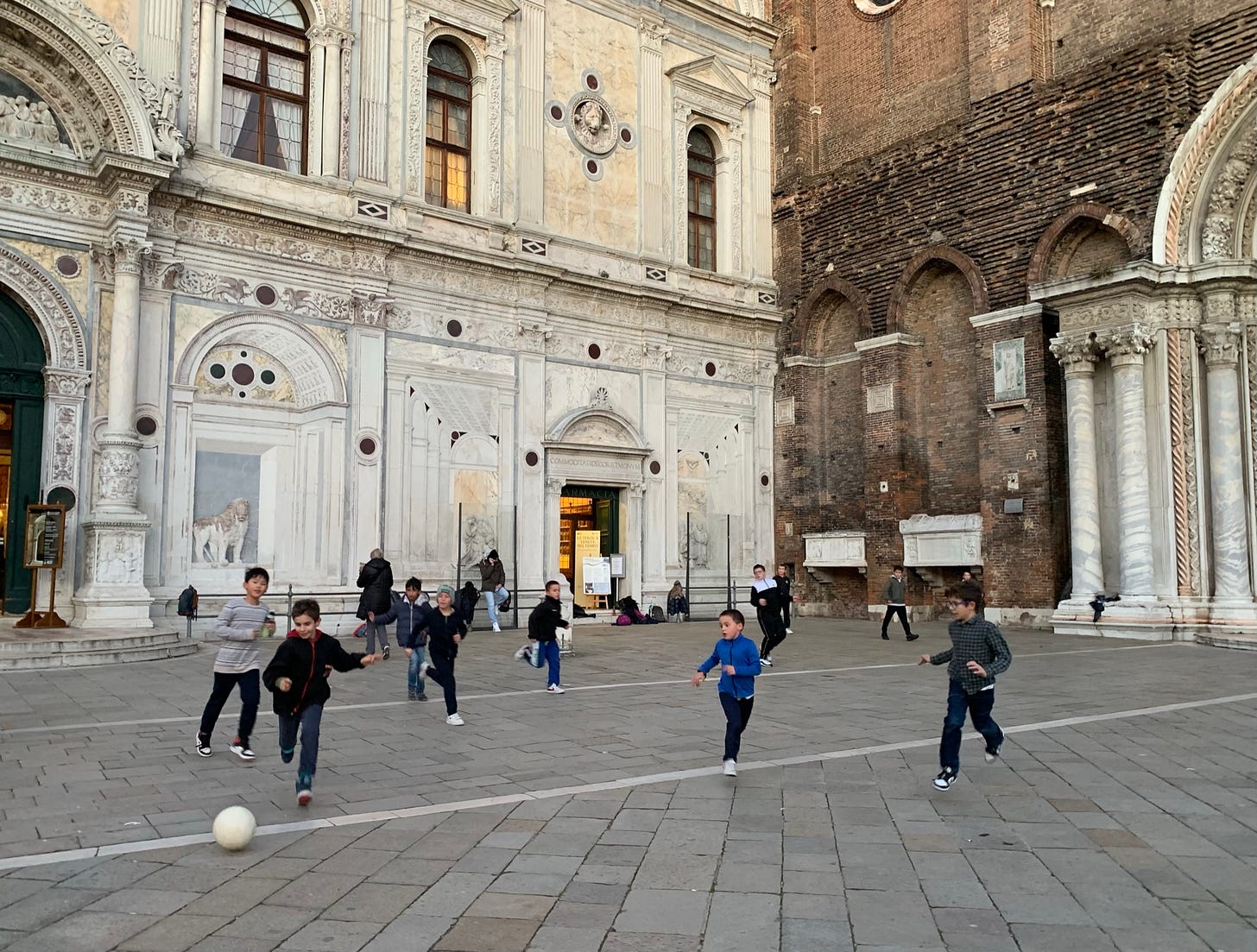
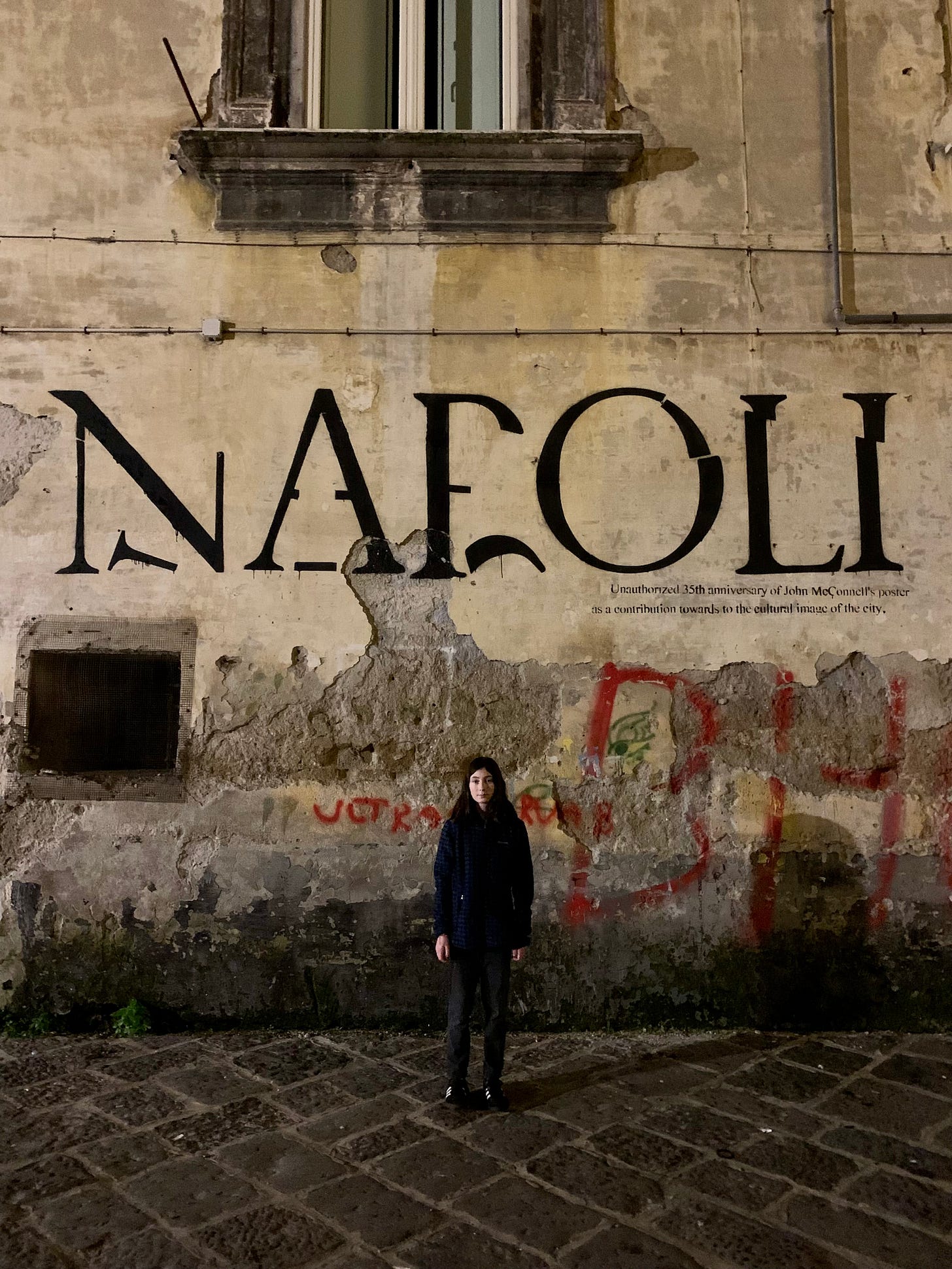
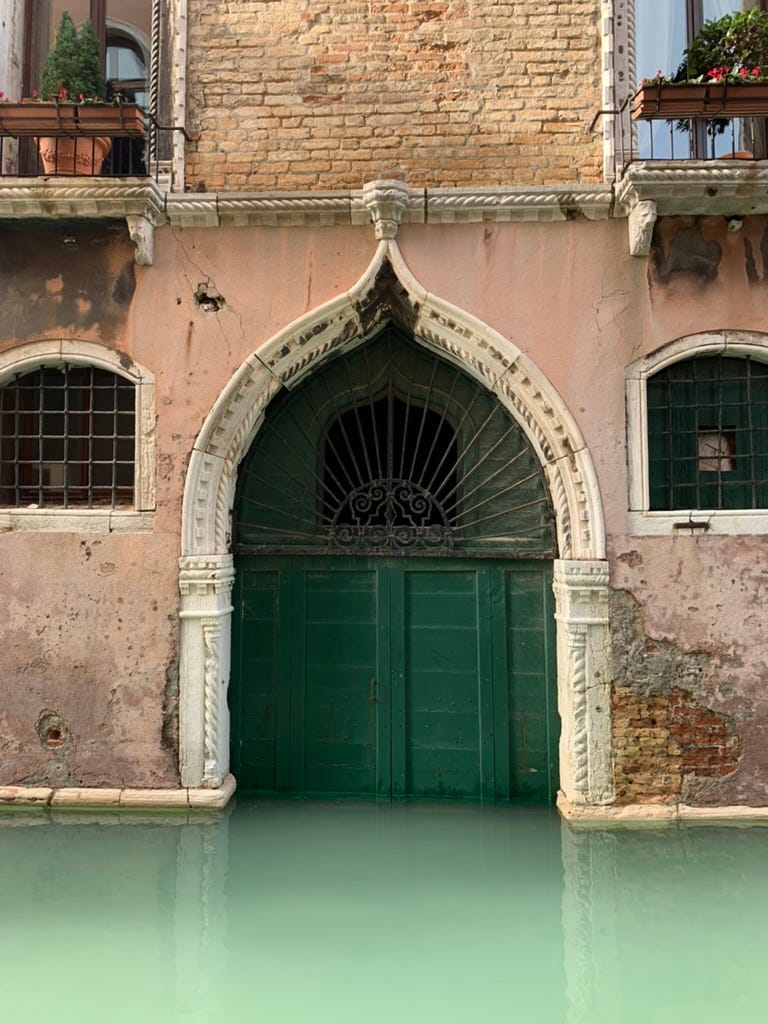
I wrote you a bio: Among other things, Belle Chesler is a middle aged woman observing from the margins who is also a little sister tomboy jock genius world traveler lover painter teacher designer mother wife potter sister dancing plant whisperer explorer friend water loving writer daughter wife adventurer artist just here, asking good questions, looking around, and making the world a more beautiful place.
Thx, Belle. for all your thought provoking insights. I love Renee’s bio for you!! Well done! She knows you. 🥰
The part about the Mediterranean Diet is pretty hilarious; do they grow avocados in Italy? After watching Stanley Tucci, I would tend to agree with your opinions about food.
Seems he’s always talking about pasta and pastries, and cheeses, and meats. And cream and butter! Hmmmm 🙄😂
Rich and I have felt for quite a while that a career in writing would be ideal for you. Understanding that it’s no doubt a challenging way to make a living, or at least to get started. I wish you could write reviews and commentaries about new art openings at museums, or artist profiles and bios, or historical texts of art and artists. And travel the continent and the states while you do it. Sound appealing?
I’ll happily read it all!